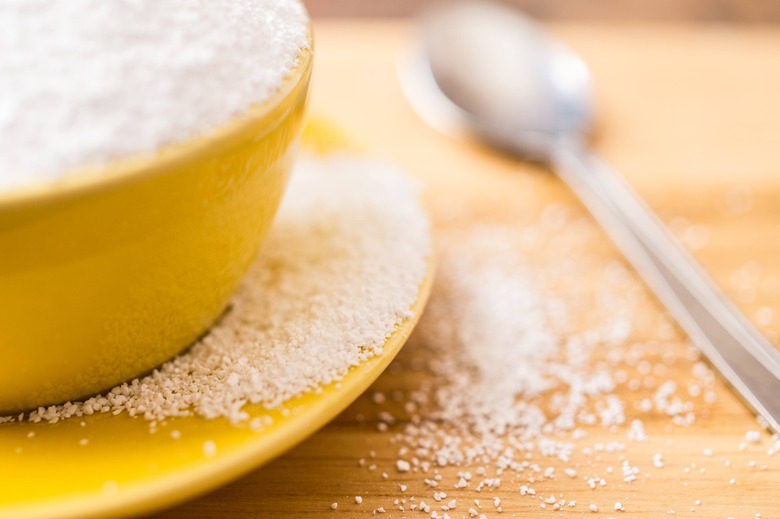CNN Rounds Up The Facts On Artificial Sweeteners
With recent studies making the use of sugar substitutes a controversial issue, CNN is taking a close look at the pros and cons of artificial sweeteners.
An important thing to mark in the debate between artificial sweeteners and sugars is the difference in portion sizes. Consumers can use much smaller portions of artificial options to achieve the same sweetness level as sugar. Sucralose for example, the chemical agent known as Splenda, is 600 times sweeter than table sugar. Because of this, sucralose comprises only a small amount of each packet of Splenda, most of the content of which is filler. Similarly aspartame, found in Equal, is 200 times sweeter than sugar, and Sweet 'n' Low (saccharin) can be up to 500 times sweeter.
All of these sweeteners have a caloric value of less than five calories per serving, justifying their zero-calorie labels.
Considering this information, it's not surprising that many people use these low- or no-calorie sweeteners to help curb sugar cravings and cut calories on weight-loss regimens. But research has suggested that tricking your body with sugar substitutes can confuse it, making it difficult to process sugar when it is reintroduced to the diet. This can cause issues with blood sugar regulation that might not be worth saving a few Weight Watchers points.
Lastly, those who use artificial sweeteners should note that each of the five chemical sweeteners approved by the FDA, including aspartame, sucralose, neotame, acesulfame potassium, and saccharin, consist of distinct chemical makeups. This means the effects of each may vary between individuals.
